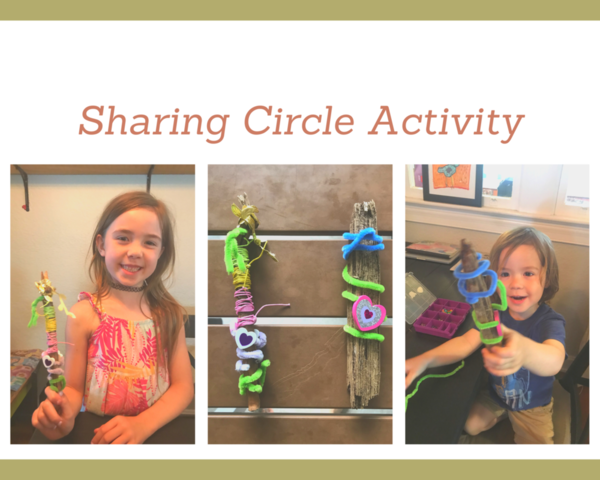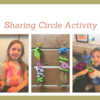I have a confession to make. I am totally insecure about being my children’s “teacher” during this new COVID-19, stay at home, reality. That is hard for me to admit since I am a teacher and a peace practitioner by profession. Technically I have been training for this my whole life! Why do I feel so unprepared?
When I told my 6 year old daughter she and her brother would be doing school from home with mommy and daddy she lit up with excitement and I could see the expectation in her eyes of the “fun” plans to come. I felt a lump in my throat as I tried to sort out in my mind how we could make this all work while splitting our time between our now virtual jobs (which is a luxury not everyone has right now) and somehow not let my daughter down. I quickly started binge consuming online learning ideas, creating google spreadsheets, formulating lesson plans, and mapping out family schedules in an effort to somehow turn myself into a DIY elementary educator overnight.
Is that what society expects us to do as parents in this COVID-19 reality?
Hopefully, the answer is no. This is an unprecedented situation that we are navigating day by day, moment by moment, breath by breath. On a conference call the other day, my boss said something that helped me reframe my perspective. She said, “Just like on an airplane, we have to put on our own oxygen masks first so we can then help others.”
My job as a parent right now is not to meet learning objectives, have the best agenda, or win the “teacher-mommy of the year award.” My number one job is to stay calm. To cultivate my own inner resilience in order to be more emotionally available to help my children navigate this challenging and stressful situation.
At the end of the day, if I am feeling stressed, anxious, and uncertain, my children are feeling it, too. In fact, they may be feeling a whole host of other feelings that I have not even uncovered because I have been so busy trying to figure out how to make it seem like things haven’t changed, that school is continuing on as “normal”--that life, as we know it, will somehow be the same. I don’t want them to feel disappointed. I don’t want them to feel stressed. I don’t want them to feel heartbroken. So I have been afraid to ask.
Here is my new plan. I am going to spend the majority of my “home school” time creating situations that cultivate honest sharing, connection, rejuvenation, and joy. I am going to teach what I know--which is peace--and trust this is exactly what we all are needing right now as a family.
It has been helpful for me to turn to the Peace and Justice Institute's Principles for How We Treat Each other as a source of inspiration. The first Principle, “Create a hospitable and accountable community,” inspired me to implement a morning “sharing circle” routine with my children that helps us all feel welcome, heard, and supported at the start of each new day.
I will share my take on this activity (and a few pictures!) in case other parents or caregivers find this helpful.
Sharing Circle Activity:
The “talking stick” is not a new idea, as it has deep roots in Native American council traditions. A sharing circle invites connection, listening, and empathy and can become a daily routine that children look forward to.
- Ask your children to find or create something that they think would be fun to decorate as a “talking stick.” Explain that this special item will be passed from person to person during the morning sharing circle activity and only the person holding the item will be able to talk (everyone else will be listening).
- Once the item has been identified, have fun decorating it together in order to make it extra special.
- Sit in a circle facing one another.
- Consider doing a brief mindfulness exercise to get centered before sharing. This could be as simple as taking a few deep breaths together, doing a guided meditation, or silently looking into each other's eyes for one minute.
- Share the intention that only one person will be talking and that person will be the one holding the “talking stick.” Everyone else will be listening. As stated in another one of The Peace and Justice Institute's Principles for How We Treat Each Other, “Listen deeply. Listen intently to what is said; listen to the feelings beneath the words. Strive to achieve a balance between listening and reflecting, speaking and acting.”
- Invite one person to share how they are feeling today and pass them the talking stick.
- Once that person is complete with their sharing, feel free to model empathy by repeating back what you heard them say regarding feelings and needs (if appropriate).
- The “talking stick” is passed to the next person and the process continues until everyone has had a chance to share.
- Consider doing another round of sharing about something you each are grateful for today (or another prompt that feels meaningful for your family).
- Close by thanking everyone for sharing.
This is just one small activity to bring a little peace and connection into the home during this challenging time. Every little thing you do to help support another person matters. We are in this together!
--
Kelsey Visser has her M.A. in International Peace and Conflict Resolution from American University in Washington, D.C. and is a Florida Supreme Court Certified County Court Mediator with over ten years of experience in teaching and training. Her primary focus has been peace and conflict resolution education and she’s had the opportunity to explore this topic on both the local and international level through her work with various nonprofits and organizations. She now works at the Peace and Justice Institute at Valencia College as a Facilitator and Project Coordinator with a focus on community resilience. She is also the part time Director of Parent Training for Rasur Foundation International and the co-host and executive producer of the Peace Mamas Podcast--which explores how to integrate peace practices into the home.



Comments (3)